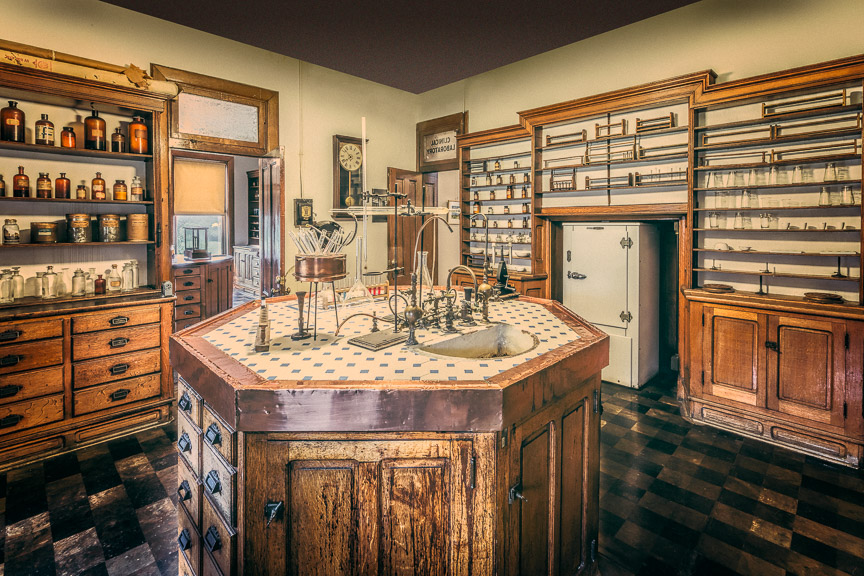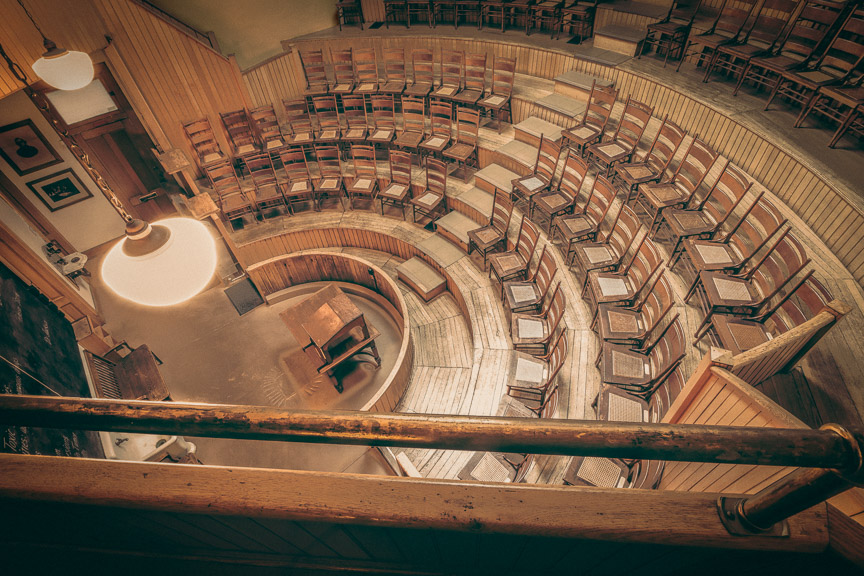By Richard Feldman, MD
Board member and past president
Indiana Medical History Museum

It’s as if the door closed 100 years ago and was never opened again. Unknown to many, it’s a time machine of sorts in the heart of Indianapolis. Located on the grounds of the former Central State Hospital and housed in the Old Pathology Building, built in 1896, today the Indiana Medical History Museum stands as a tribute to the advances in medical science over the past century. This medical laboratory operated at the forefront of utilizing the scientific method in the understanding and treatment of disease.
Listed on the National Register of Historic Places, it’s the oldest freestanding medical pathology building in America. This unique building is a historical and architectural gem that has been left virtually untouched by time. The architect, Adolph Scherrer, also designed the state capitol building. Its classic European-style medical amphitheater was once used for medical school lectures, autopsy demonstrations and patient presentations; with the various laboratories and autopsy room, one instantly travels back in time to experience what it was like to be a medical student or research physician more than a century ago. Until 1956, Indiana University School of Medicine continued conducting classes there, focusing on neurologic and psychiatric diseases.
In the Historic Family Doctor’s Office exhibit housed in the Old Dead House (where the hospital stored the corpses of patients), the visitor can walk through the actual contents of a mid-20th century physician’s office. Many of us will instantly flash on our own childhood memories of our family doctor.
The museum is filled with the whispering spirits of those doctors and other medical professionals from the past who were convinced that the application of the new sciences of chemistry, bacteriology and histology could be used to better diagnose, treat and even cure mental illnesses. After completion, it was hailed as the most complete, state-of-the-art, cutting-edge medical laboratory in the world. Yes, right here in Indianapolis.
Important research was conducted at Central State Hospital’s Old Pathology Building. Before the discovery of antibiotics, a noted German physician, Walter Bruetsch, perfected the malarial treatment for neurosyphilis (the cause for 30% of admissions to mental hospitals) a great advance from the use of arsenic. Other research included studies on spinal fluid, rheumatic diseases of the brain, muscular dystrophy, schizophrenia and treating syphilis with penicillin.
By the early 1970s, the state planned to demolish the Old Pathology Building. Charles Bonsett, MD, along with four other physicians, took immediate steps to save this unique and historic structure and its contents. They worked politically and established a foundation dedicated to its preservation. The demolition plans were forced into abandonment.
But in recent years, the irreplaceable Old Pathology Building fell in desperate need of extensive structural and external and internal restoration work. And because of severe water-intrusion damage, the building was listed on Indiana Landmarks’ 2015 10 Most Endangered List. Without state funding, the museum launched its $2.2 million capital campaign, “Giving Medical History a Future: Saving the Old Pathology Building,” to preserve the museum for future generations. The museum has been successful in raising half of its campaign goal and corrected the severe structural problems placing it in immediate danger. But much more restoration needs to be accomplished.
As Indiana positions itself as the life sciences capital of the world, you can support this Hoosier treasure by your tax-deductible contributions. It belongs to all of Indiana.
Visit the museum’s website.
 Photos: Tom Mueller Photography and the Indiana Medical History Museum
Photos: Tom Mueller Photography and the Indiana Medical History Museum
This article originally appeared in the Indianapolis Medical Society (IMS) Bulletin.